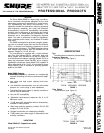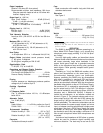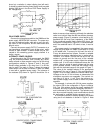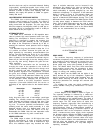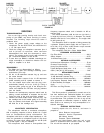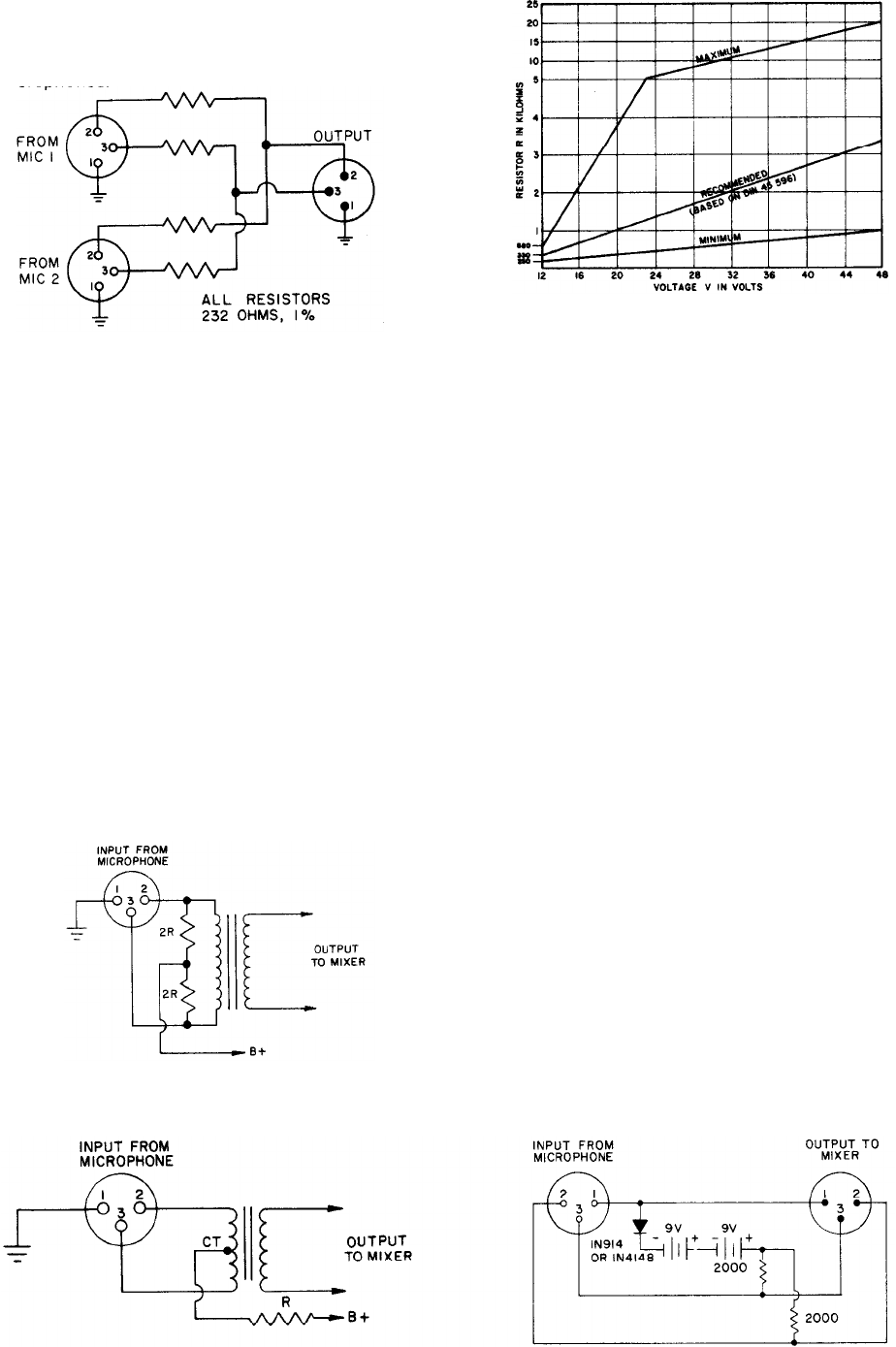
ohms, but a reduction in output clipping level will result.
It should be noted that the power supply itself may add
loading (3300 ohms in the Shure PS1A Power Supply) to
the microphones.
ISOLATION NETWORK
FIGURE 4
PS1A POWER SUPPLY
Connect the microphone cable to the SM80 and the
power supply MICROPHONE connector. The power sup-
ply uses the balanced audio cable pair to carry the sup-
ply current to the microphone, and the cable shield as a
ground return.
Connect the power supply OUTPUT connector to a
low-impedance microphone input of the mixer, audio
console or tape recorder. A second SM80 may be con-
nected to the remaining power supply channel in a
similar manner.
ALTERNATE POWER SOURCES
As an alternate to the PS1A power supply, the SM80
may be phantom-powered from virtually any mixer,
audio console or tape recorder using one of the wiring
configurations shown in Figures 5 and 6. Any well-
filtered voltage available in the mixer from 12 to 48 Vdc
may be used. The graph in Figure 7 shows the range of
values which can be used for resistor R when the SM80
is used with a regulated power supply. The tolerance of
the resistors (2R) shown in Figure 5 should be 1% or
TWO-RESISTOR CONFIGURATION
FIGURE 5
RESISTOR R VALUES
FIGURE 7
better to assure close matching, although the absolute
value is not critical. Note that the two-resistor phantom
power supply (Figure 5) presents a load equal to 4R,
paralleled with the mixer input impedance, to the SM80.
If the combined parallel load is below 800 ohms, the
transformer configuration (Figure 6) is recommended,
and if the combined load is 150 ohms or less, it must be
used.
If the power supply is unregulated, the power supply
voltage may drop when the SM80 is connected to it, due
to the added load. To account for this load, the value of
R may be determined as follows. Connect a variable
resistance (or resistor substitution box) in series with a
10-kilohm, 10% resistor. Connect the free end of the 10k
resistor to ground and the free end of the variable
resistor to B + of the power supply. Adjust the variable
resistor until 12 to 36 volts is measured across the 10k
resistor. Note the actual dc supply voltage and the value
of the variable resistor. Verify that the resistor value
falls with the indicated range on the graph of Figure 7.
The value of the variable resistor is the appropriate
resistance R for use in Figure 6. If the configuration in
Figure 5 is to be used, double the resistor value (2R).
Voltages as low as 10 Vdc minimum as measured at the
microphone connector are acceptable. The nominal cur-
rent drain at 10 Vdc is 1.1 mA. This is the minimum cur-
rent a power supply must be able to deliver for proper
operation.
For example, in mixers with 30 Vdc power supplies,
the value of 2R for the configuration in Figure 4 could be
3.6k. Two 3.6k resistors should be closely matched (2%
or better), and may be mounted externally with the B +
end connected to the 30V terminal. The resistors may
also be mounted internally (such modifications should
be performed by qualified service personnel only).
A convenient method of battery-powering the SM80
using two 9-volt batteries is shown in Figure 8. Note
CENTER-TAPPED TRANSFORMER
CONFIGURATION
FIGURE 6
BATTERY POWER SUPPLY
FIGURE 8



